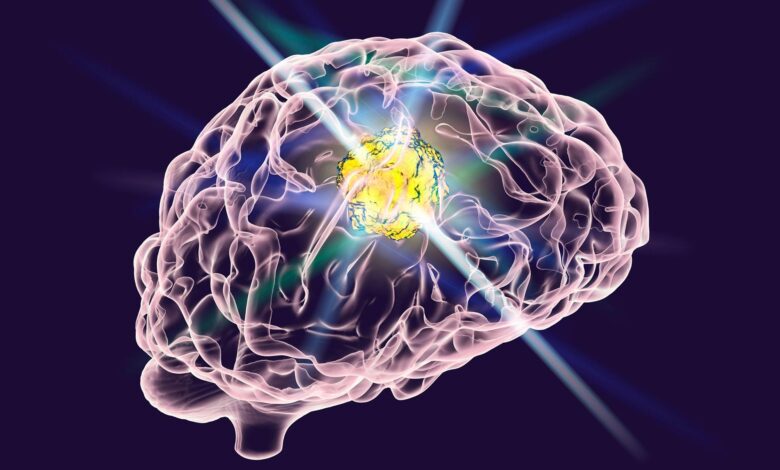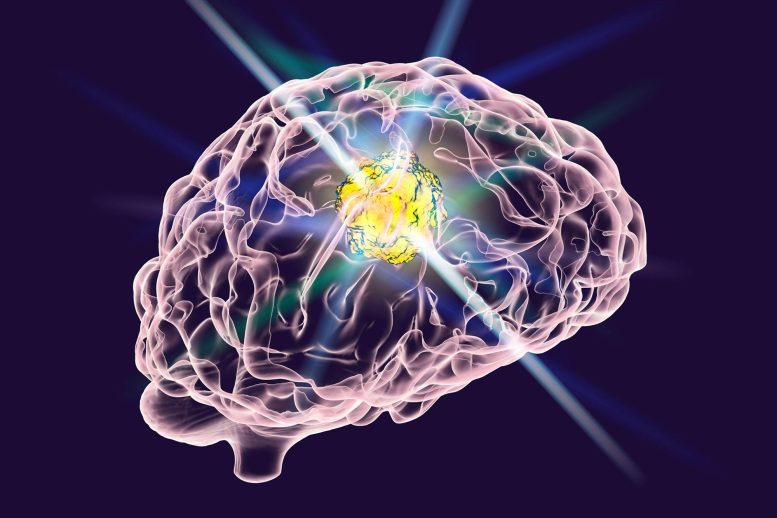UCLA’s Pioneering Vaccine Shows Promise Against Deadly Brain Cancer


UCLA researchers have enhanced immunotherapy for malignant gliomas by combining a dendritic cell vaccine with poly-ICLC, showing promising improvements in immune response and potential for increased survival rates, paving the way for more effective treatments.
The use of poly-ICLC in combination with a dendritic cell-based immunotherapy vaccine shows promise as a treatment for patients with deadly brain cancer.
Researchers at the UCLA Health Jonsson Comprehensive Cancer Center have identified a combination immunotherapy that boosts the immune response in patients with malignant gliomas, an aggressive and challenging-to-treat type of brain tumor.
The study, published in Nature Communications, found that pairing a personalized dendritic cell vaccine with the immune-boosting substance poly-ICLC enhances the immune response and activity of T cells in patients with malignant glioma, and improves the dendritic cells’ ability to fight the brain tumor more effectively than the vaccine alone.
“Treating malignant gliomas is very complex and due to the infiltrative nature of these tumors and their location in the brain, these patients often have a poor prognosis,” said Robert Prins, a professor of molecular and medical pharmacology and of neurosurgery at the David Geffen School of Medicine at UCLA, and co-senior author of the study. “By improving the potency of the vaccine, we’re hoping it can induce more effective anti-tumor immune responses in patients diagnosed with malignant gliomas.”
The dendritic cell vaccine, pioneered at UCLA, uses a person’s own white blood cells to help activate the immune system to fight cancer. Dendritic cells typically alert the immune system when it detects a foreign invader.
Mechanism of the Dendritic Cell Vaccine
The vaccine works by combining brain tumor protein antigens derived from surgically removed tumors with dendritic immune cells generated from the patient’s own blood. The dendritic cells train the immune system to recognize the tumor antigens so that when they are injected back into the patient the immune system will be educated to recognize and attack tumor cells.
While the vaccine has shown promise in treating patients with malignant gliomas, the treatment does not work for everyone.
To further amplify the anti-tumor immune response, researchers looked at adding toll-like receptor (TLR) agonists to the vaccine. TLR agonists bind and activate a family of evolutionarily conserved receptors expressed by dendritic cells and macrophages to help alert the immune system to foreign pathogens. By activating these TLRs on dendritic cells, the UCLA team theorized that the combination might then increase the frequency and infiltration of antitumor-specific T cells, while reducing the suppressive capacity of the tumor microenvironment.
The team specifically looked at two different TLR agonists — poly-ICLC and resiquimod — to see which one would be safer and more effective in combination with the vaccine.
The team enrolled 23 patients, ranging from 26- to 72-years-old, with WHO Grade III-IV glioma who were randomized to receive either poly-ICLC, resiquimod or a placebo in addition to the personalized DC vaccine.
In order to determine the optimal therapeutic combination, the team performed a high-dimensional single-cell analysis to understand the systemic proteomic and transcriptomic changes induced by the TLR agonists. This type of analysis lets the researchers see how the TLR agonists affect the immune cell proteins throughout the body.
They discovered that poly-ICLC demonstrated superior effectiveness, triggering a stronger immune response compared to resiquimod or the vaccine alone. The researchers observed a marked increase in the activity of interferon genes and substantial alterations in immune cell behavior, indicative of enhanced antitumor activity.
Most notably, the expression of PD-1 surged in CD4+ T-cells, while CD38 and CD39 levels diminished in CD8+ T-cells. There was a notable rise in the number of monocytes, which are key players in the immune response.
Potential Implications and Future Research
The investigators also found that the response was specifically linked to interferon, a protein that plays a key role in the body’s defense against pathogens and is measurable in the patient’s peripheral blood. The stronger the interferon response after the treatment, the longer the patients survived. While this association was statistically significant and suggests a potential link between this treatment and improved survival rates, the study was not originally designed to measure the survival rates of this treatment. As such, the authors emphasized the need for caution regarding true clinical benefits of this combination treatment.
“If further study confirms the link between systemic interferon activation and survival rates in malignant glioma patients, we could potentially use interferon activation as a biomarker,” said Willy Hugo, assistant professor of medicine in the division of dermatology at the David Geffen School of Medicine at UCLA and co-first author of the study. “This means we could test patients for this specific immune response, and if it’s strong, we know they are likely to respond well to the combined TLR agonist and dendritic cell vaccine therapy.”
Patients who show no or low interferon response after the therapy could be directed toward other treatments or clinical trials more quickly, saving valuable time in their fight against this aggressive form of brain cancer.
The team also noted that combining these treatments with immune checkpoint inhibitors, which are another type of immunotherapy, could be another promising approach. They have already started a new clinical trial to test this combination in patients with recurrent glioblastoma, which is supported by the UCLA Specialized Program of Research Excellence (SPORE) in Brain Cancer.
“This research is a step forward in the quest for more effective immunotherapy for gliomas, along with developing a potential blood-based test to determine if the patient’s immune system is responding to the vaccine in a way that will help in the fight against this devastating form of brain cancer,” said Dr. Richard Everson, assistant professor of neurosurgery and co-first author of the study.
Reference: “TLR agonists polarize interferon responses in conjunction with dendritic cell vaccination in malignant glioma: a randomized phase II Trial” by Richard G. Everson, Willy Hugo, Lu Sun, Joseph Antonios, Alexander Lee, Lizhong Ding, Melissa Bu, Sarah Khattab, Carolina Chavez, Emma Billingslea-Yoon, Andres Salazar, Benjamin M. Ellingson, Timothy F. Cloughesy, Linda M. Liau and Robert M. Prins, 8 May 2024, Nature Communications.
DOI: 10.1038/s41467-024-48073-y
This study was funded in part by a grant from the National Cancer Institute.



